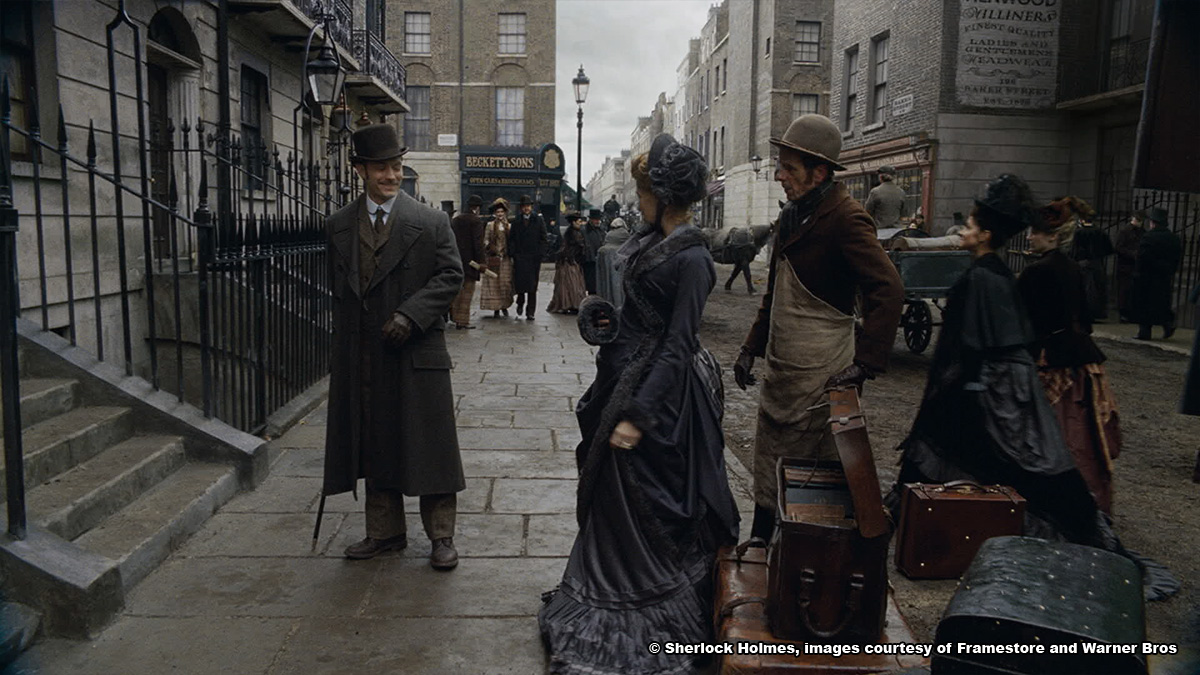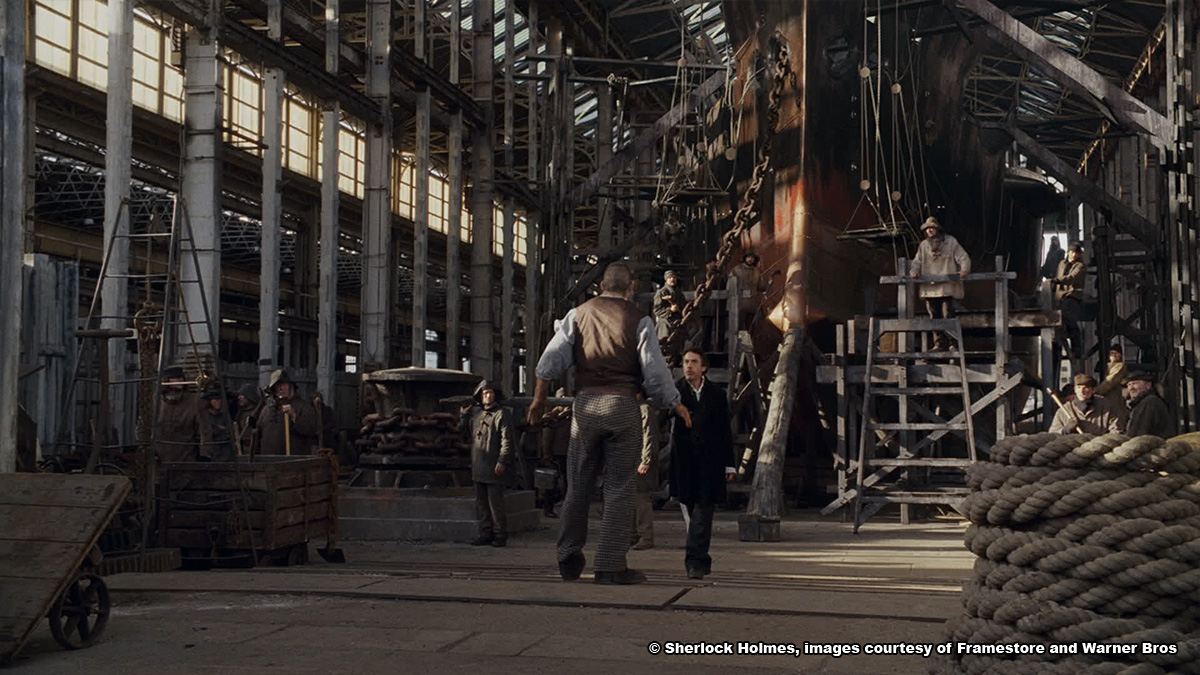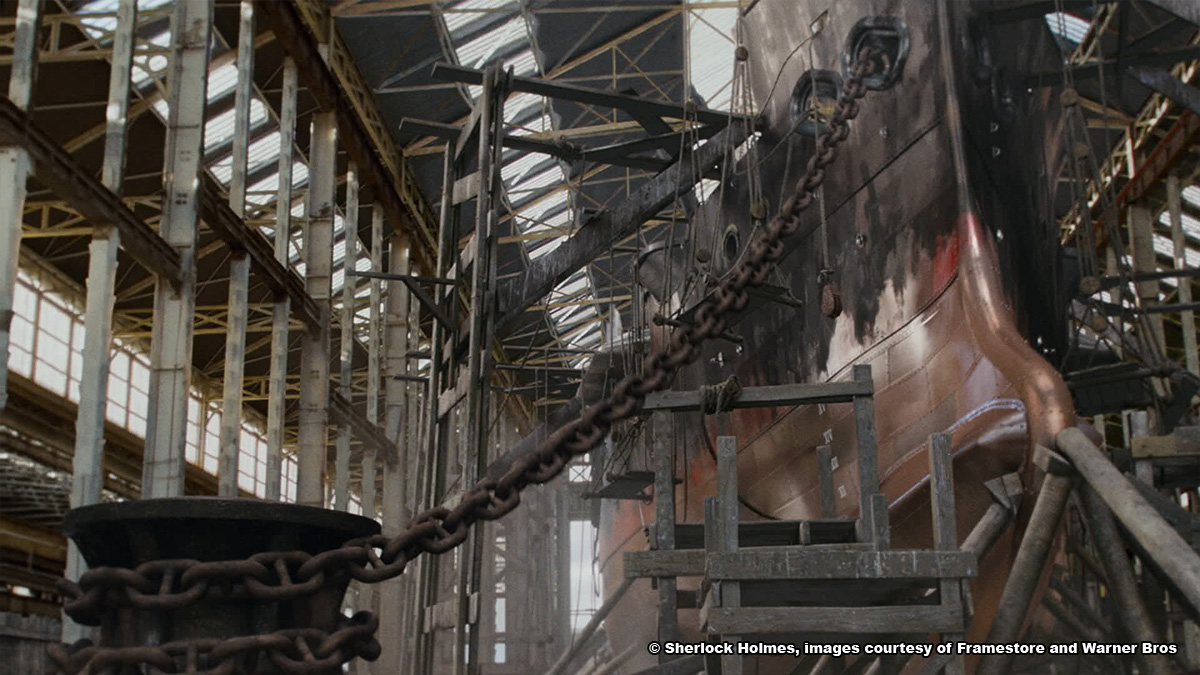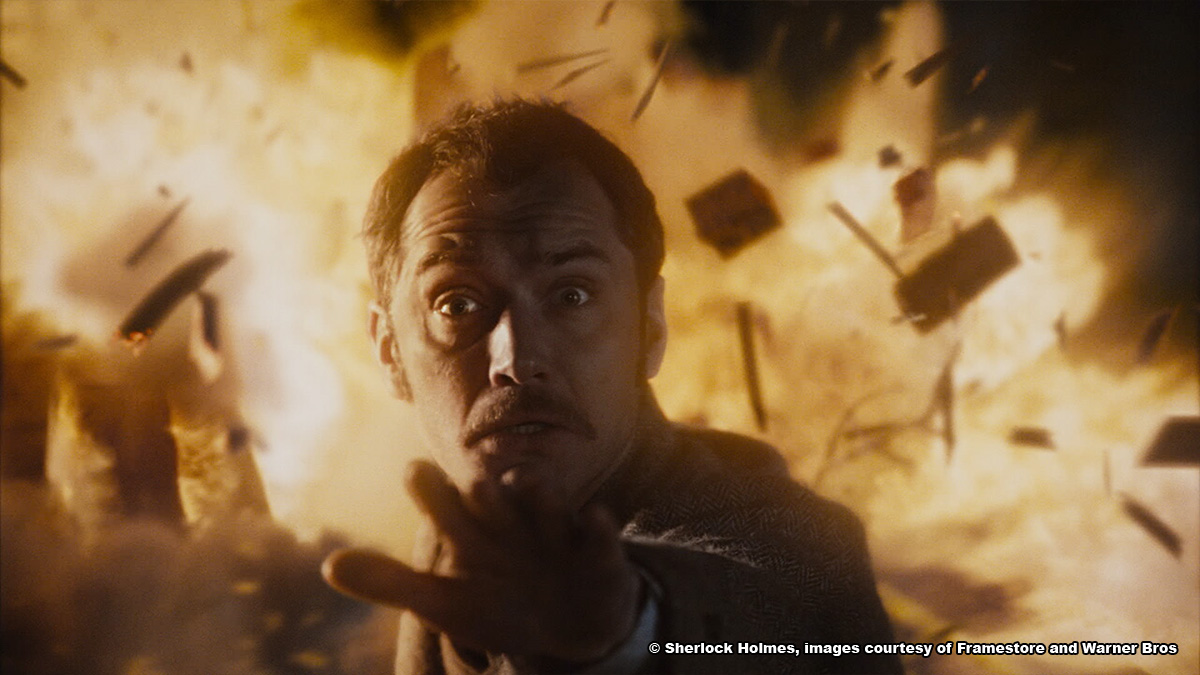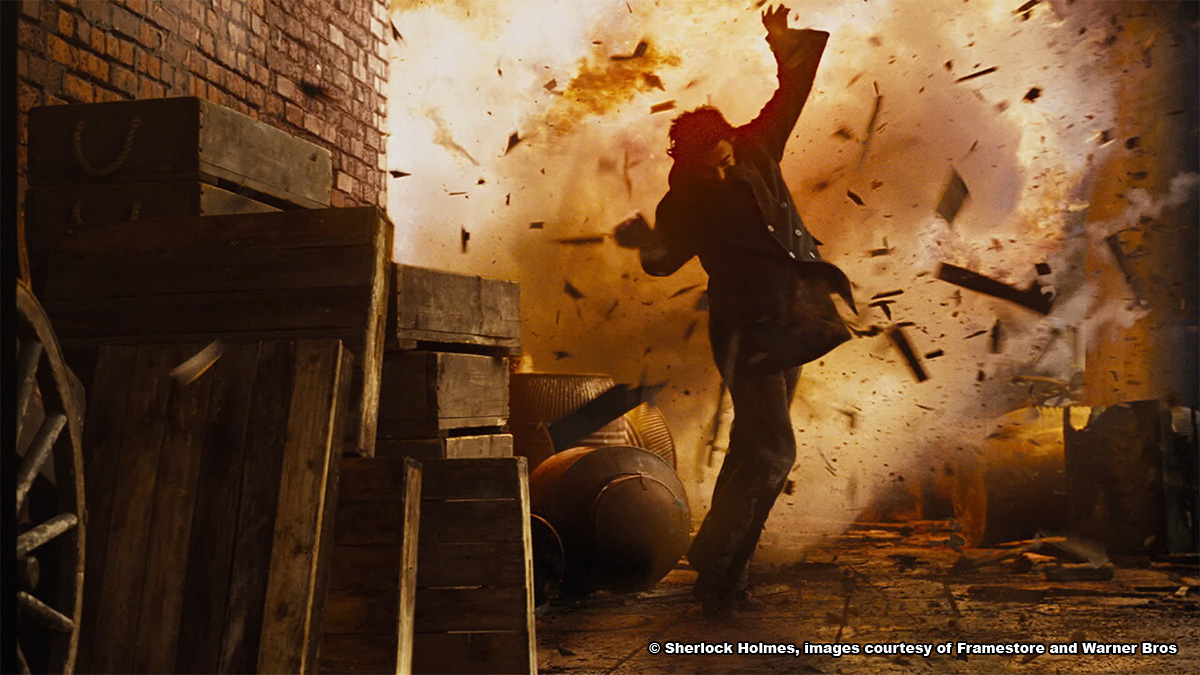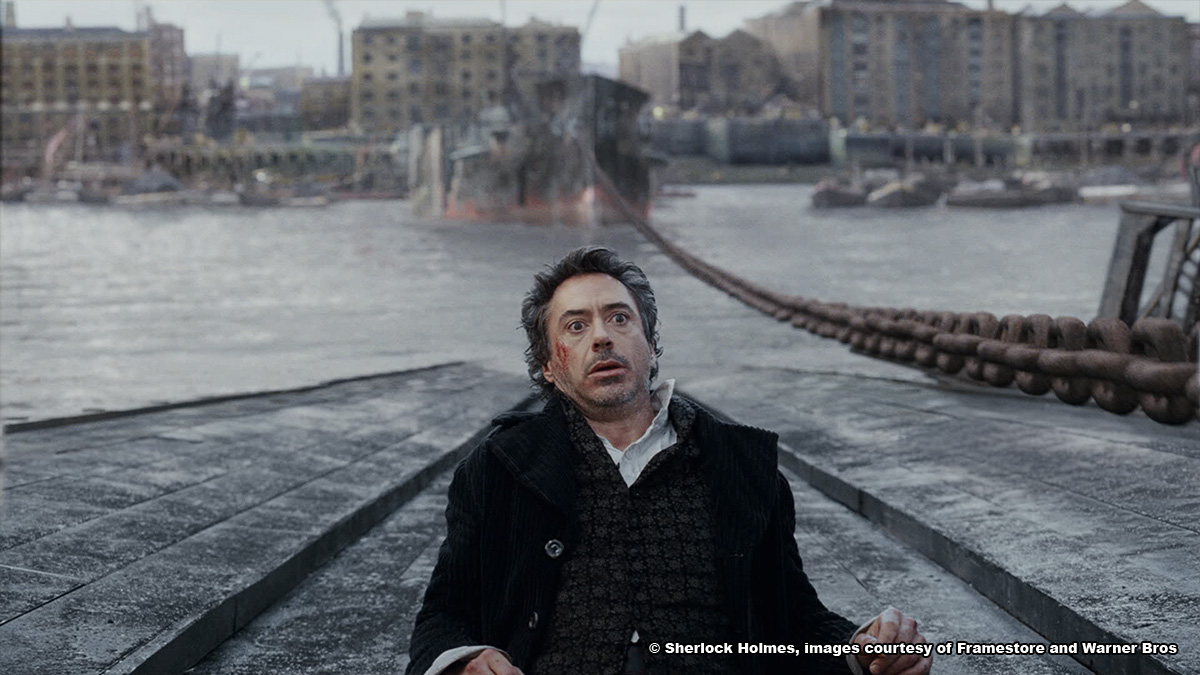Jonathan Fawkner talks with us in the following interview about his work on SHERLOCK HOLMES, he has done in parallel with AVATAR. Note that Framestore received the VES AWARD for Outstanding Supporting Visual Effects in a Feature Motion Picture for SHERLOCK HOLMES.
Hello Jonathan, you’ve had a busy year. First AVATAR and then SHERLOCK HOLMES. How did you manage those projects at the same time?
Well it was certainly an interesting time. I shared the AVATAR supervision duties with Tim Webber so that certainly helped. The key to the whole thing was a great production team that I couldn’t have done it without. The AVATAR day actually was a bit later than the SHERLOCK day and I was able to juggle the demands quite easily once we got a the days planned out and everyone knew where I would be and when. But SHERLOCK was the “day job” and it delivered first, even though it came out later.
How was your collaboration with Guy Ritchie and Chas Jarrett?
Both Chas and Guy made the whole project really enjoyable. Both had a great attitude to the vfx. Chas had a meticulous plan from the outset and I was really impressed with his execution of the shoot and attention to detail and creative method of achieving shots and elements. Guy trusted Chas on most of the vfx work and had a very instinctive reaction to most shots. His mind was made up, more often than not in the first few frames. If something did not sit right with him, he would let us know otherwise we just got on with it. They were both a lot of fun to work with.
What are the sequences made at Framestore?
Framestore took on the lion’s share of the work, including the “Wharf explosion” and “Shipyard” sequences. About 450 shots in all.
I guess you had to hide many elements of the current London?
We called it “past-ification”. It was a key strategy to most of the material as Guy wanted to shoot on location wherever possible. We approached it in a number of ways but they ranged from simply painting something away, to replacing large sections of background with matte painting, to replacing whole foreground elements in CG, particularly on the river Thames sequences.
Can you explain in detail about the sequence of the fight beside the ship?
There was actually a quarter of a ship built on a location in a real Victorian shipyard at Chatham, Kent in keeping with Guys desire to shoot as much on location as possible. Enough of the ship was built to enable the close up shots of the actors in front of the hull to be shot for real. Our work there was limited to “pastification” of areas that could not be dressed and the addition of atmosphere and any views out of the doors at either end of the slipway. This included a river Thames and 19th century river wharf beyond.
Whenever we went for a wide shot we extended the set ship with our 3D lit and textured version, including all the ropes, chains, platforms and shipbuilding paraphanalia that were needed. When the ship started to move though the whole thing was CG and all the aforementioned materials were simulated to react accordingly.
Chas shot the ship on three separate occasions. With the practical ship, without the practical ship but with the destruction detritus in place, and with a completely clean shed for background plates. In the end we ended up replacing the shed with a CG projection mapped version as so much of it was being “pastified” including the whole of the roof.
As the ship is released by the Dredger character, it rips a capstan from the ground which does a lot of damage. We used a propriotary rigid body simulator called fBounce to very efficiently simulate hundreds of destructions of platforms, slipways, barrels, ladders and everything needed to devastate the area. With the addition of multiple smoke and atmos layers and a complicated chain simulation we were able to complete the effect. The water impact was enhanced by a trip to a lifeboat station where we filmed multiple launches to gather the elements we needed to composite our much larger uncontrolled ship launch.
What did you do on the big slow motion sequence with explosions?
This was a sequence that was not originally in the script but Guy had the idea for putting his actors in very real and tangible danger. There were no digital doubles or stuntmen used in the sequence. It is all Robert, Jude and Rachel. The whole thing was shot on a location in Liverpool that could not use any pyrotechnics so we were presented with quite a clean plate. Chas had story boarded the sequence and established an order for the explosions and where they would happen. These were lit with small flambos and the actors bombarded by air mortars which added some interactive lighting and gave the actors something to react to. But all of the explosions and destruction was added by us.
Chas executed a high speed motion control green screen shoot on a one-to-one scale mockup of the location. It was an ingenious modular construction that allowed each explosion to be seated in the correct scale surroundings. We shot each ignition separately on a Frog moco rig travelling at nearly 70mph in order that we could match or exceed the shutter speed of the plate. All of the interaction with the characters and set was then achieved with pain-staking compositing and lighting bled from the explosions themselves. We added a CG brick wall collapsing and some CG fire to a mimed performance from Robert during one shot which was about 30 seconds long, and also debris, embers and smoke to each explosion. Guy wanted the characters to be bombarded wherever possible and to be fully engulfed, and yet to be sure that it was our actors who were in the shot and not stunt men. In a couple of shots we rip a hole through clothes to further emphasise their proximity.
What was the biggest challenge on this show?
I knew the wharf explosion would go to the wire and it did. Guy was very attached to the sequence and he kept adding more and more. They were some of the first shots started in earnest and the last shots finalled.
How long did the post-production?
We worked for about a year.
Did you encounter some difficulties?
Due to a very well executed shoot with a good ammeinable crew and a down to earth director, the whole show passed relatively un-troubled. We had a good time.
I read that Framestore Reykjavik worked on the show. What have they done?
They helped us out on the animation side. There was a lot of simulated animation in SHERLOCK but the ship and bouncing capstan required a more creative touch. The Iceland team were free and able to help out.
Why open a branch in Reykjavik?
We had a lot of talented Icelandic crew. They wanted to be at home and we wanted to work with them still. We have crew in New York as well. The talent is pooled, and technology means we all get to collaborate pretty seamlessly.
What is your next project?
I am now on NARNIA: THE VOYAGE OF THE DAWN TREADER.
Thanks for your time.
WANT TO KNOW MORE?
– Framestore: Dedicated page to SHERLOCK HOMES on Framestore website’s.
© Vincent Frei – The Art of VFX – 2010


